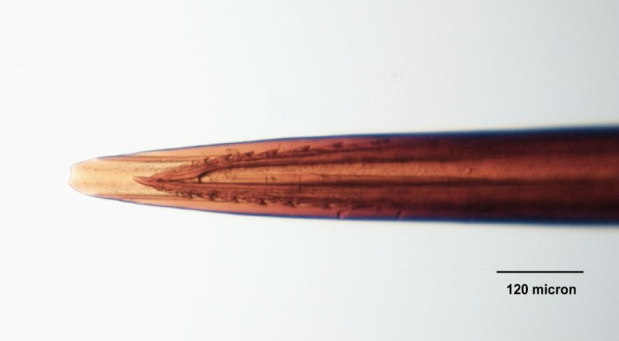Wasps (Download)
WASPS 1 General Information Part of the Insect Order Hymenoptera This order also includes bees and ants Almost every insect has a wasp species that preys on it Wasps are critically important to controlling the numbers of insects and are used in agriculture for pest control 75,000 species of wasps are known 2 Types of Wasps Common types of wasps: Digger wasps Yellow Jackets Hornets Sand wasps Fig wasps Mud daubers Spider wasps Paper wasps 3 Types of Wasps Wasp species vary greatly. Some species are social and vegetarian while some are predatory and venomous. Species vary in size, shape, color, and some do not have wings. VS. 4 Anatomy of a Wasp A wasps body is broken into 3 parts, the head, thorax, and abdomen, all protected by an exoskeleton. Wasps have 2 sets of eyes, compound eyes and ocelli . Wasps have 2 pairs of wings however, some species of wasps are wingless They have 6 jointed legs, 2 jointed antennae, mandibles, and a stinger at the tip of the abdomen. 5 Nests A single wasp begins construction on a nest that will lead to housing up to 500 wasps. Nests are normally formed out of a papery material made from wood pulp, however many species burrow in the ground to form nests. In mixing saliva with wood, the nests are formed and can be made into cones which are used for housing larvae. 6 Stings Only female wasps have stingers. The stinger is part of the ovipositor and injects venom. Wasps CAN sting more than once! Wasp venom releases a histamine which dissolves red blood cells causing swelling. 1% of the population is allergic to this histamine. Mild sting reactions include itching, irritation, redness and swelling. People who are highly allergic can become asphyxiated, get hives, or have heart problems. 7 Injuries by the numbers 1% of the population is allergic to the venom of stinging insects such as bees and wasps. In the United States, 90-100 people die a year from bee and wasp venom. Death normally occurs within an hour of the sting so immediate first aid care should be sought. http://ohioline.osu.edu/aex-fact/192/pdf/0192_1_03.pdf 8 OSHA Case Two workers were clearing the banks of a river from hurricane debris which was typically logs, dead wood, etc. Two men were in a workboat with an outboard motor and they were manually picking up small pieces of debris, wood, etc. on the river banks. The workers encountered a wasp nest on a live tree limb over the river and the wasps attacked them. The workers, while attempting to get away from the wasps, took their life jackets off and jumped into the river. One of the workers drowned . 9 Preventing Stings Avoid disrupting the immediate proximity of a nest. Wear long sleeves and long pants . Do not wear fragrances. Avoid swatting at insects. Wear light colors If stung, immediately flee the area to prevent more stings. 10 THINK SAFELY WORK SAFELY 11

